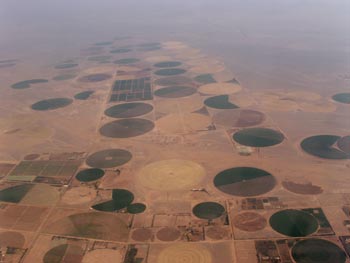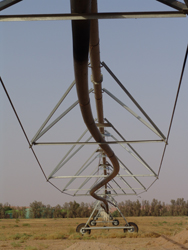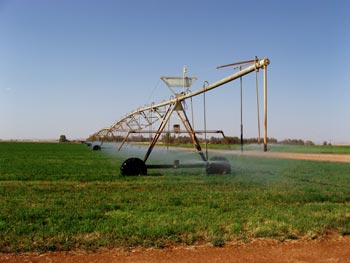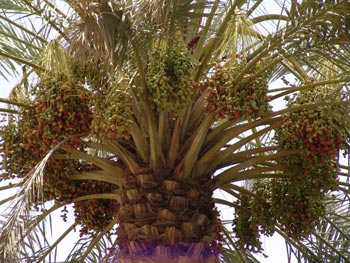Saudi Farming
A Saudia Airbus starts its slow descent towards the northern city of Hail, some 700 kms from the Saudi capital of Riyadh. Far below, stretching to the horizon, lie green circles, each up to a kilometer wide, spotted over an arid landscape of red, yellow and brown.

For the most part, the passengers on board will be totally unaware that at the centre of many of these crop circles is a Scania engine chugging away in its endless quest to pump up water from aquifers hundreds of metres below the surface.

Newcomers to the Saudi Arabia are often surprised to find that oil is not the only viable natural resource in the kingdom. Over the past few decades, vast expanses of seemingly inhospitable desert have grown green with the help of machinery imported from the west, changing the economic and natural landscape for ever.
Huge farms can be found embedded in the mineral rich sands of the peninsula following on from their smaller predecessors, which in the main grew date palms, wheat and vegetables, fed from the network of wadis – or seasonal river beds – which dissect the three main deserts that make up so much of the country.
Saudi Arabia is the largest country in the world without rivers although its underground resources are said to equal the annual flow of the Nile for the next 600 years. Ultimately water availability will limit the amount of land that can be turned over to farming. It is estimated, however, that there is enough water in rainfall and below ground for the area of cultivated land to be almost doubled in the short term.
Yet if the casual visitor finds it difficult to picture crop farms in the desert, what must he make of the Al-Safi dairy situated at Al Kharj, some 50kms south of Riyadh? It has been listed in the Guinness Book of Records as being the largest dairy farm in the world, with some 29,000 head of Holstein Friesian cattle. And the success of the dairy farming industry has made Saudi Arabia a prime exporter of dairy products across the Middle East.
Extraordinarily, given its environment, Saudi Arabia is today the most efficient agricultural producer in the Middle East and as the Saudi diet has become more varied, so the agricultural industry has endeavoured to diversify in order to satisfy local demand. A wide variety of vegetables and fruits are grown by market gardeners for export, as well as to supply the urban markets which the modern road infrastructure has made more accessible. Saudi Arabia is now the largest wheat producer in the region - even exporting wheat, dairy produce, poultry, eggs, fish, fruit and vegetables to no fewer than 45 countries.
It was only during the latter part of the last century that steps were taken to capitalize on the Kingdom’s abundant supply of underground water and to encourage rural development, providing jobs for the traditionally nomadic Bedouin population. The Saudi government encouraged farmers to invest in agriculture by assisting them with long, medium and short term interest-free loans for machinery, fertilizer and seed and guaranteeing the sale of their crops. Between 1975 and 1995 alone, the Kingdom invested around $16bn in agricultural projects. Over that same period, land for agriculture expanded tenfold and the country started to export its crop surpluses to other Gulf states in 1986.
Back in Hail, Salaam Abed Al Shammari’s farm relies on a Scania DC16 to pump some 1,800 gallons of water every minute over the 73 hectares that make up his agricultural holding. The water is drawn up and distributed through nine towers that feed massive pivot-centred irrigation machines, each circling round a central hub. It is easy to forget that this was once regarded as the great inhospitable Nafud desert – some 22,000 square miles of rolling red sands that stretch almost to the Jordanian border.

Wheat, alfalfa, potatoes and other vegetables now grow where once there was only sand, and herds of camels, goats, cows, ostriches and other farm animals have grown up alongside the watering robots whilst the local markets flourish.
Date palms too can be found bordering Salaam’s crop circles. The kingdom contains one tenth of the world’s mature productive date palms. And although dates are no longer a staple of the Saudi diet, they form an important supplementary and traditional part of it. As a physical representation of the Arabic Ahlan wa Sahlan (Welcome!), dates are the symbol of abundance arising from the desert. They are a fundamental offering to guests and appear throughout Arabic culture in poetry, lyrics and art. Better storage and packaging have meant that dates too are now exported.

The businessman flying in for his meeting in Hail may be totally unaware of the key role that companies such as Scania play in Saudi Arabia, but without them the country would certainly be very much the poorer.
